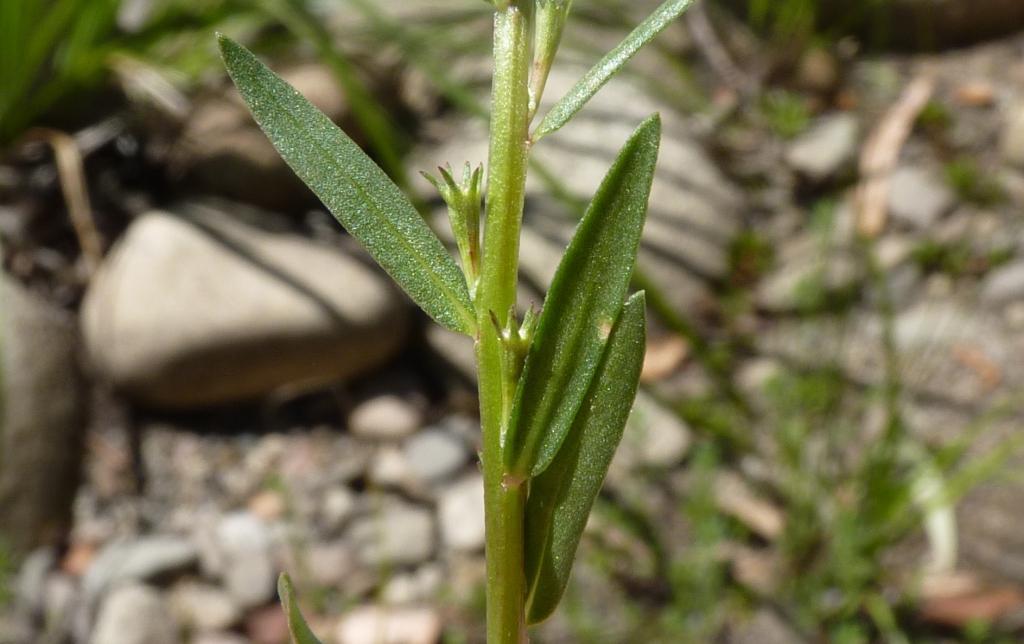Lythrum
Prostrate to erect, annual or perennial herbs or shrubs, glabrous or pubescent; stems and branches rounded, angular or ribbed. Leaves alternate, opposite, or in whorls of 3, sessile or subsessile; stipules absent. Inflorescence axillary, with flowers solitary or consisting of few-flowered dichasia or clusters. Flowers actinomorphic, subsessile to shortly pedicellate; hypanthium tubular, ribbed; appendages present, elongate; sepals 4–6, shorter than hypanthium; petals 4–6, obscure to showy; stamens as many as or twice as many as sepals; ovary 2-celled. Fruit usually a cartilaginous, septicidal capsule, enclosed in persistent hypanthium; seeds minute, numerous.
About 35 species, cosmopolitan; 5 species in Australia, 3 probably native and 2 naturalized.
Jeanes, J.A. (1996). Lythraceae. In: Walsh, N.G.; Entwisle, T.J., Flora of Victoria Vol. 3, Dicotyledons Winteraceae to Myrtaceae, pp. 909–911. Inkata Press, Melbourne.
 Spinning
Spinning



